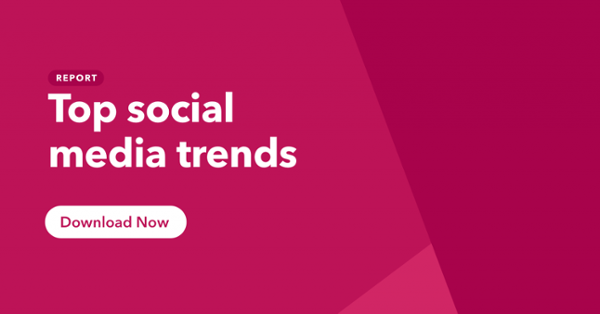It’s hard to imagine a world without social media.
In the 1980s to mid-1990s, our main form of communication with others was either by telephone or in-person — a crazy notion, we know. In the early 2000s that all started to change with the emergence of the new kids on the block: social media platforms. Myspace or Bebo, anyone?
In 2019, our relationship with social media is hardly comparable. Our daily life is consumed by status updates, likes, direct messages, retweets — and everything in between.
Consumers are spending up to 3 hours on social media platforms per day, and even longer looking at their mobile screens.
Social media has completely revolutionized how we interact with others and express ourselves. It’s created borderless, instant communication, with powerful and long-lasting effects.
But what impact has this had on consumers’ everyday lives?
A year ago, we carried out bespoke research to find out what “social” really means for consumers, by exploring if consumers were still enthusiastic about the social elements of the networks, or if “social” had started to mean different things to users as it evolved.
We decided to revisit this area and explore how consumers’ relationship with social media has developed even further.
Social media isn’t standing still
Social media was once a place where friend networks were in the thousands.
And let’s be honest: it’s not like many people would actually know that number of people in real life. Photos, status updates, and videos became public knowledge, instead of an intimate moment shared between friends.
But things are changing. Consumers are rethinking what content they share and who they share it with.
GDPR and data breaches are likely to have played a significant role in influencing consumers privacy attitudes, with 3 in 5 global internet users worried about the internet eroding their privacy.
In turn, consumers have turned toward private messaging apps to share and interact with friends and family.
Our data reveals consumers’ first port of call to share an article with family and friends is to use a share button to send as a private message (42%) through the likes of Facebook Messenger or Instagram Direct Message.
A further 26% would share via a messaging app like WhatsApp. Interestingly, consumers are more comfortable about sharing holiday pictures on social media (42%), but even if they do, 30% would still opt to send via a private message on social networks.
This shows consumers are more selective about how they share their content, with many opting to use private channels instead.
These findings are in line with our previous research on dark social, which found consumers in the U.S. and UK are more likely to be sharing content on private messaging apps than social media platforms (63%).
The repercussions are that brands need to shake up their social media strategies to reach consumers effectively. Adidas, for example, was one of the first to use Facebook Messenger for its Tango Squad campaign back in 2017, and many brands have followed suit.
When we look at the role social media plays in consumers’ lives, we see consumers in the U.S. and UK use social media first and foremost to keep in touch with friends and family.
Globally, however, the main reason to use social media is to stay up-to-date with news and current affairs (40%), which is just ahead of staying in touch with friends.
Finding funny or entertaining content is also the third biggest reason to use social media, gradually creeping up in importance over the years.
When it comes to using social media in the future, consumers in the U.S. and UK say entertainment (46%), news/current events (39%), and researching products or ideas (32%) are important to them.
All of this shows how social media platforms are moving beyond purely “social” activities and are instead becoming a one-stop-shop for our daily needs.
From our global research, we know social media networks play a vital role for brand discovery (28%) and product research (42%), but they’re also gradually becoming a place to complete purchases as networks mature further.
Instagram and TikTok are the networks already making headway in this space.
Everything in moderation
It’s hard to ignore the news surrounding social media lately — criticized for everything from widespread security breaches to its impact on teenagers’ mental health.
In fact, the scrutiny facing social media has contributed to the emergence of new digital wellbeing tools, like screen time trackers, which help individuals be mindful of how they use technology.
Social media has become so intertwined in our daily activities, it’s often hard to separate our online and offline life. This can easily lead to consumers feeling overwhelmed, and they’re taking action as a result:
39% of social media users in the U.S. and UK have decreased their time on social media over the past year.

The perceived negative effects of using social media has likely played a role in consumers moderating their time spent on it.
Younger audiences especially are making great efforts to decrease their daily time spent on social media. 46% of 16-24s say they’ve reduced the amount of time they spend on social media compared to 34% of 55-64s.
Younger audiences like Gen Z spend the most time on social media per day — just shy of 3 hours globally — so this is likely a large contributing factor for moderating their time spent.
In comparison, older generations have taken to social media at a more gradual pace, and aren’t juggling as many accounts as younger audiences.
We also see some gender differences, with women (44%) being more inclined to reduce their time spent on social media compared to men (33%).
Going back to basics
First things first: most social media users (74%) aren’t deactivating accounts. And the majority don’t plan to either.
This suggests most social media users are content with simply decreasing their time on social media or sticking with their usual routine as is.
But this isn’t the case for everyone:
Just over a fifth of social media users in the U.S. and UK say they deactivated a social media account in the last year.
Again, we see younger consumers choosing to deactivate theirs at a higher rate than older users.
For example, 26% of 16-24s deactivated an account compared to 13% of 55-64s. Interestingly, younger consumers view deactivating as more of a temporary solution than a permanent fix.
48% of 16-24s have temporarily deactivated their accounts compared to 30% of 55-64s. Many younger consumers don’t want to prise themselves away from their social media accounts entirely, likely preferring the flexibility that temporarily deactivating gives them.
We highlighted above how women are decreasing their time spent on social media more than men. However, we see men are deactivating their accounts more than women, and among those who are deactivating, they’re also opting for permanent closure of their accounts (66% vs. 46%).
Similar to last year’s findings, social media account deactivators are still keen users, spending an average of 2 hours and 35 minutes on social networks per day.
We explored the reasons behind account deactivation and discovered there were no stand out reasons for doing so. Rather, it appears there are many different factors weighing on deactivators’ minds.

Our data shows there’s proof of an over-saturated social media landscape, with just over 1 in 4 deactivators’ showing less interest in what other people do/share.
This makes sense when we consider the sheer amount of information bombarding consumers every day. It’s not a big surprise many are growing weary and feeling overloaded.
There’s a clear need to spend more time “offline”, and in a sense going back to the way things used to be. Around 1 in 4 want to spend their time doing other things (e.g. hobbies) and 1 in 5 want to spend more time offline with their friends and family.
We also see a range of concerns consumers have with social media.
Around 1 in 4 are worried about what they post on social media affecting their future (e.g. employer), a little over 1 in 5 feel social media has become too image-driven, and the same percentage don’t trust social media companies with their data/content.
Widespread security scandals have likely triggered a shift in users perceptions of social media, and platforms will need to work hard at regaining that trust.
It’s not all doom and gloom
All the negativity surrounding social media lately hasn’t completely undermined its positive impact however.
Just over 2 in 5 social media users say social media helps them feel more connected with people in real life, and account deactivators feel the same.

Social media acts as a gateway to stay in touch with loved ones and friends, helping people connect with each other regardless of their location. This has always, and will likely continue to be a major draw for using social media.
Additionally, 35% say social media has no impact on their personal relationships, while 13% say its influence has negatively impacted their relationships.
As we mentioned earlier, most social media users aren’t deactivating their accounts, which is good news for brands and platforms alike. While user behavior might be changing to some degree, it doesn’t mean deactivators are neglecting social media platforms altogether.
Consumers are simply trying to take more control of their online social media life, from how long they spend on networks to where and how they share content.
Brands need to listen to what consumers are saying and meet consumers where they’re at — and that means considering private messaging channels as part of their social media strategy.
Social media will remain a key place for brands to reach consumers, and will only continue to evolve even further to meet consumers’ changing demands.






.webp?width=495&height=317&name=pink_thumb_graphs%20(1).webp)
.webp?width=495&height=317&name=pink_thumb_letter%20(2).webp)
